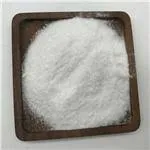Understanding Sulphamic Acid Powder Uses, Benefits, and Safety Measures
Sulphamic acid, also known as sulfamic acid or aminosulfonic acid, is an inorganic compound with the chemical formula H3NSO3. This versatile compound is commonly available in its powdered form, and it has a wide range of applications across various industries, from cleaning supplies to food processing.
Properties and Composition
Sulphamic acid is a white, crystalline powder that is highly soluble in water. Its safety profile is noteworthy; it poses minimal hazards compared to other stronger acids, making it a preferred choice in many applications. The compound’s acidity level is moderate, offering effective pH control in aqueous solutions without the extreme reactivity of stronger acids like hydrochloric acid.
Industrial Applications
One of the primary uses of sulphamic acid powder is in cleaning agents
. It is particularly effective in descaling applications, where it helps remove lime scale and mineral deposits from a variety of surfaces, such as in boilers, heat exchangers, and industrial equipment. This descaling property is primarily due to its ability to dissolve calcium and magnesium salts, which are responsible for hard water deposits.In addition to its cleaning abilities, sulphamic acid is utilized in the textile industry for dyeing processes. It helps in stabilizing dye solutions and ensuring uniform dye uptake, which is essential for producing high-quality fabrics. Furthermore, it is an essential component in some food processing methods, where it can be used as a food additive.
Benefits
sulphamic acid powder

The advantages of sulphamic acid powder are numerous. Its effectiveness in cleaning and descaling makes it a cost-efficient alternative to stronger acids, which often require more safety precautions and can lead to material corrosion. Additionally, its low toxicity contributes to a safer working environment, allowing for easier handling and reduced risks of harm when used in various applications.
Another benefit lies in its environmental suitability. When used as a cleaning agent, it tends to have lesser environmental impact compared to phosphoric or hydrochloric acids. As sustainability becomes more critical in industry practices, sulphamic acid's status as a more environmentally friendly option is gaining attention.
Safety Measures
While sulphamic acid is relatively safe compared to other acids, it is still essential to follow appropriate safety measures when handling the powder. Users should always wear personal protective equipment (PPE), such as gloves, goggles, and masks, to avoid direct skin or eye contact and inhalation of dust. Proper ventilation is also crucial in work areas to minimize exposure to fumes.
In case of contact with the skin or eyes, it is important to wash the affected area thoroughly with water and seek medical assistance if irritation persists. Additionally, spills should be handled promptly to prevent slips and falls, and proper disposal methods must be followed to minimize environmental harm.
Conclusion
In conclusion, sulphamic acid powder is a remarkable compound with a wide array of applications across multiple industries. Its effectiveness in cleaning, descaling, and stabilizing dye solutions, combined with its relatively safe handling profile, makes it an attractive choice for manufacturers and users alike. As businesses increasingly prioritize sustainability, sulphamic acid stands out as a viable alternative that aligns with both performance requirements and environmental considerations. Embracing the benefits of this compound, while adhering to safety protocols, can lead to both effective results and a safer working environment.

